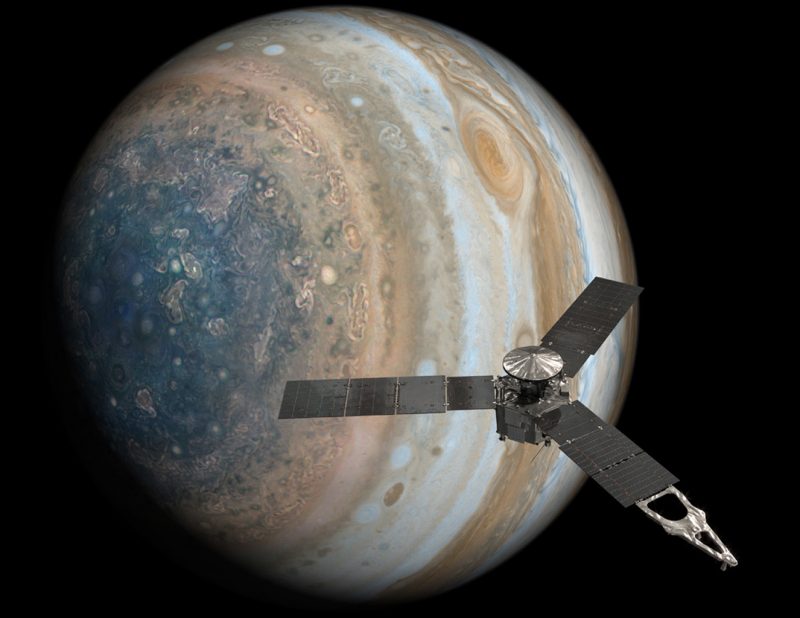
This article was originally published at Americaspace.com. Reprinted here with permission.
NASA’s Juno spacecraft has successfully completed its 8th science flyby of Jupiter, passing over the gas giant’s swirling cloud tops once again as it continues to unravel the mysteries of the largest planet in the solar system. The mission itself also now has a new project manager, who will oversee the continuing flow of information being sent back, which has already greatly expanded our knowledge of Jupiter, upending some theories and presenting new questions.
The new Juno project manager is Ed Hirst, of NASA’s Jet Propulsion Laboratory in Pasadena, California. He said on November 2, 2017:
All the science collected during the flyby was carried in Juno’s memory until yesterday, when Jupiter came out of solar conjunction [when the planet is behind the sun from Earth].
All science instruments and the spacecraft’s JunoCam were operating, and the new data are now being transmitted to Earth and being delivered into the hands of our science team.
The flyby occurred on October 24, (Perijove 9) but the confirmation of its success was delayed until October 31 by the solar conjunction, which interrupts communications between the spacecraft and Earth.
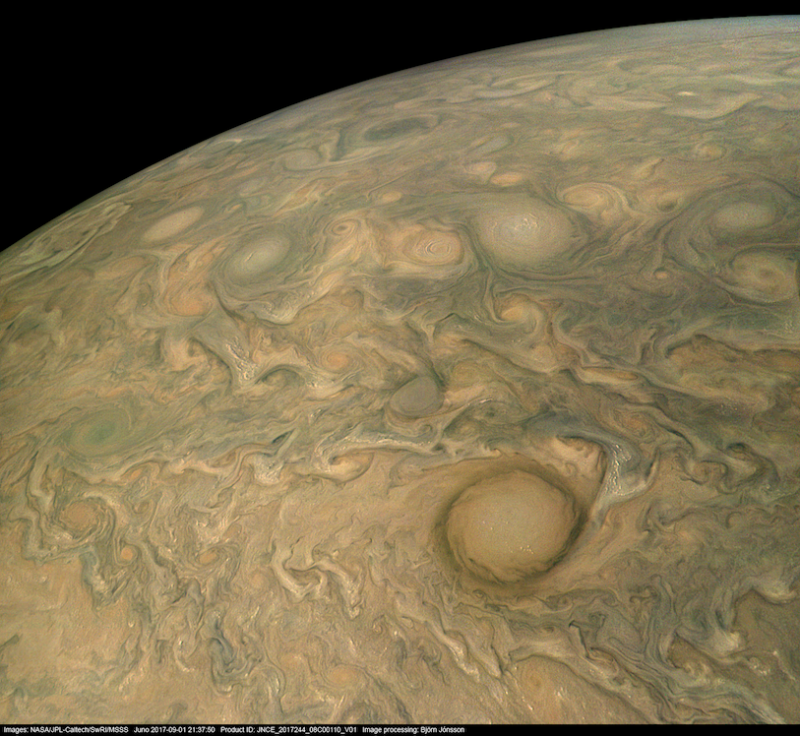


Juno has been busy orbiting Jupiter since July 4, 2016, using its instruments to study the planet’s atmosphere, clouds and auroras. At its closest, the spacecraft passes within 2,100 miles (3,400 km) of Jupiter’s cloud tops, providing unprecedented views of the turbulent atmosphere, which often looks like it was painted by a cosmic watercolor artist. Hirst commented:
There is no more exciting place to be than in orbit around Jupiter and no team I’d rather be with than the Juno team. Our spacecraft is in great shape, and the team is looking forward to many more flybys of the solar system’s largest planet.
Juno previously found that Jupiter’s auroras seem to defy earthly laws of physics and are much more powerful than any on Earth. The auroras have also been studied more recently by NASA’s Chandra X-ray Observatory. The data from Juno has also shown that Jupiter is more complex internally than previously thought, with current theories being turned on their heads.

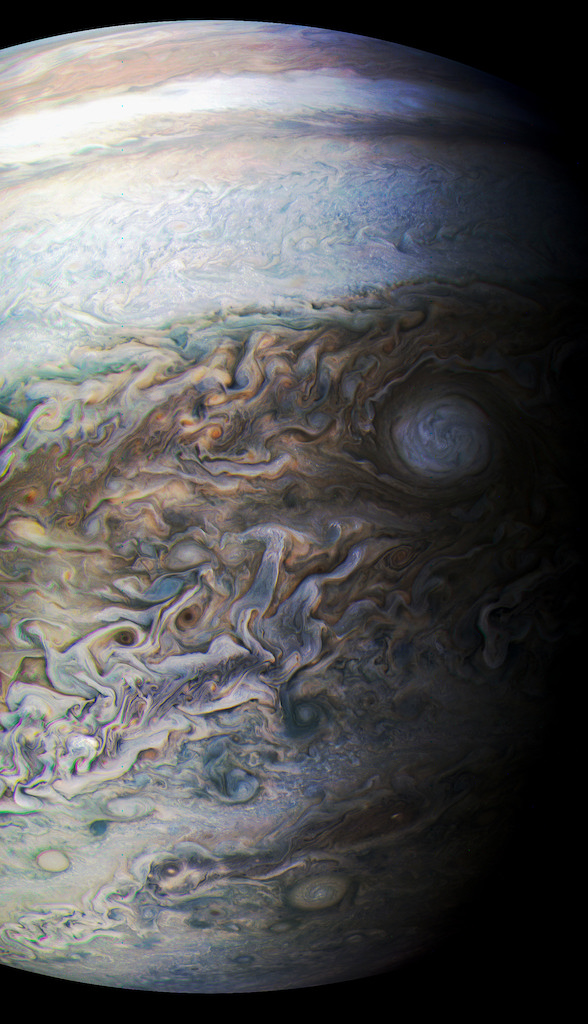
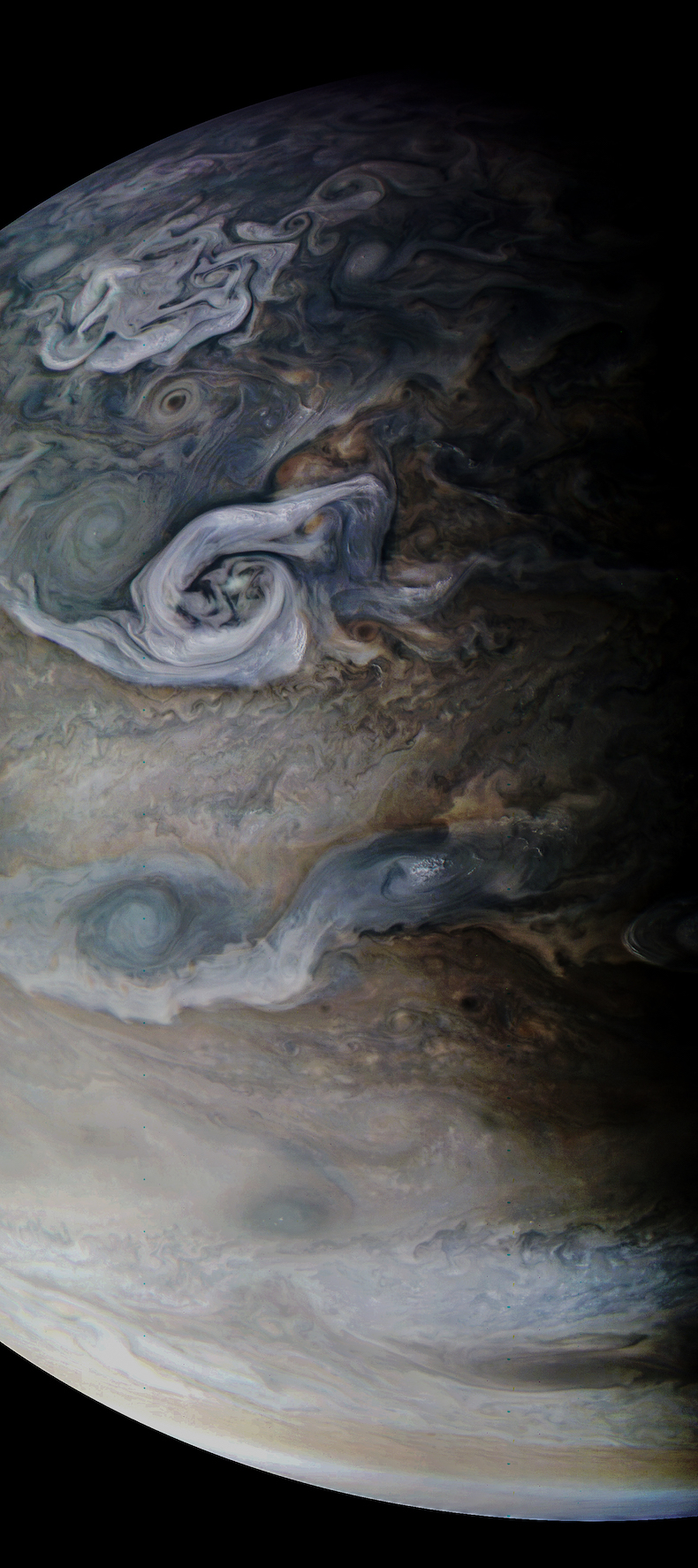
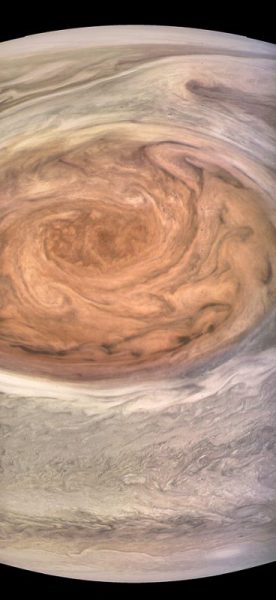
Juno’s principal investigator Scott Bolton earlier told WIRED:
Almost nothing is as we anticipated. But it’s exciting that Jupiter is so different than we assumed.
Juno was first launched on October 5, 2011, and is the first spacecraft to visit Jupiter since Galileo, which ended its mission on September 21, 2003 by intentionally plummeting into Jupiter’s atmosphere, much like the Cassini probe did at Saturn last September.
Ed Hirst – Juno’s new project manager – has worked on the mission since the beginning, and also worked on the Galileo, Stardust and Genesis missions. He replaces Rick Nybakken, who was recently appointed deputy director for JPL’s Office of Safety and Mission Success.
Juno’s next close flyby of Jupiter will be on December 16, 2017.
Bottom line: New images and info from the Juno mission’s 8th science flyby of Jupiter.











